Insights
Clerkenwell Design Week
3D Team Review
06/06/25

The 3D Design team took a trip to the heart of London’s creative scene Clerkenwell Design Week (CDW). This annual event is a cornerstone in the design calendar, offering a unique opportunity to explore emerging trends, discover innovative products, and gain first hand inspiration. It’s always a refreshing experience to see, touch, and interact with the latest in design thinking, products and materials.
See below our highlights from the day as well as a summary from attended talks ‘Be Your Own Trend Forecaster’ and ‘Embedding Wellness into Homes, Hospitality, the Workplace and Beyond’s panel discussion.
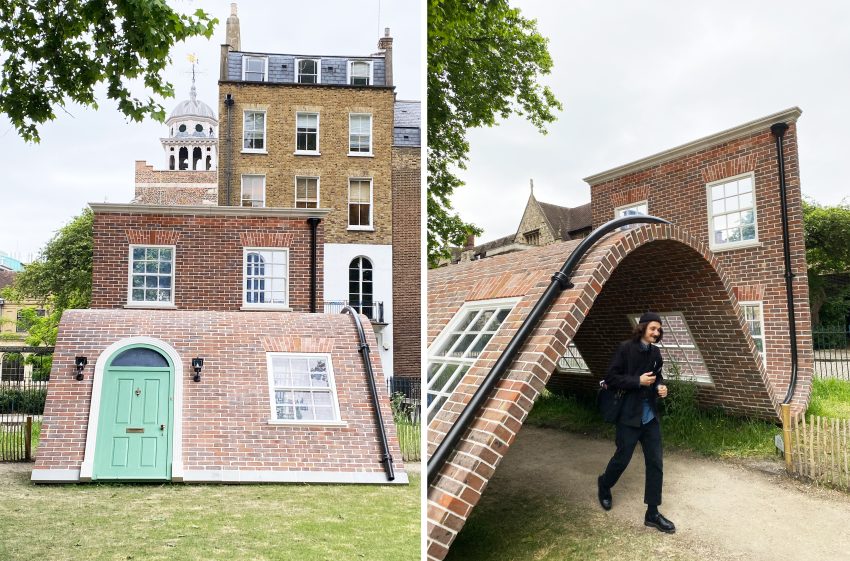
Throughout the day, we stepped into a world of open door showrooms and beautifully considered designed spaces which showcased installations, materials, lighting, and furniture in context as well as industry expert insights with Clerkenwell conversations pop up talks.
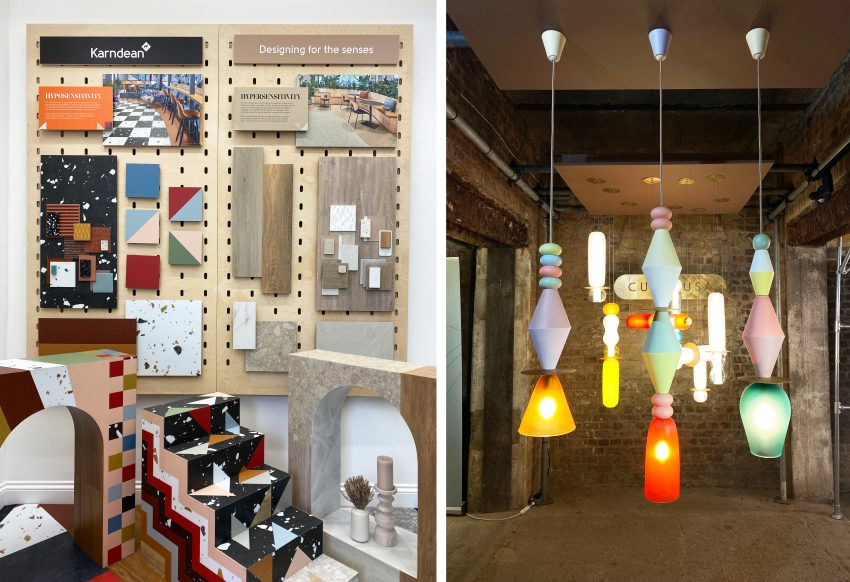
From a material /process highlight, Studio Sanne Visser were a standout! HairCyle is revolutionising what natural human waste products could become, by using human hair as a potential material for the future! Very exciting, we expand on this further below.
Another personal product highlight for our team was Aeris, an office furniture design company with a unique philosophy: humans were made to move. Their designs bring motion and flexibility into typically static work environments, offering furniture that supports natural movement throughout the day.
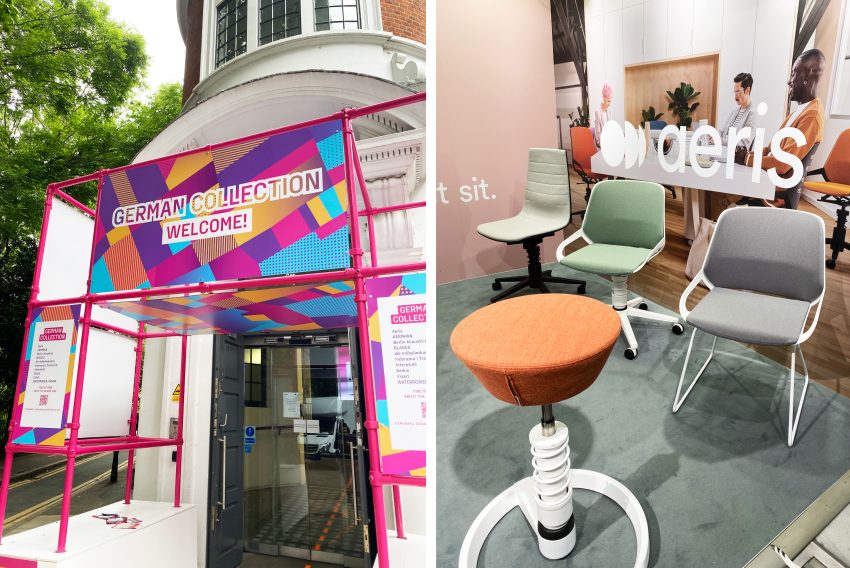
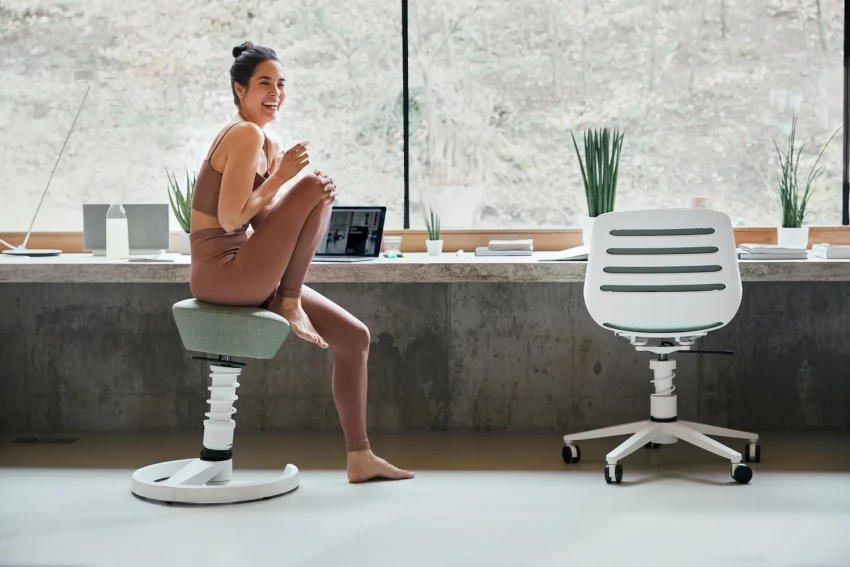
This approach not only adds a dynamic quality to the workspace but also contributes to improved wellbeing. By encouraging subtle, continuous movement whether through active seating or flexible standing solutions. Aeris designs help reduce physical strain, improve posture, and promote better overall health. For our team, it was a standout example of how thoughtful design can positively impact the way we feel at work.
Now, onto some talks,
01 – Be Your Own Trend Forecaster
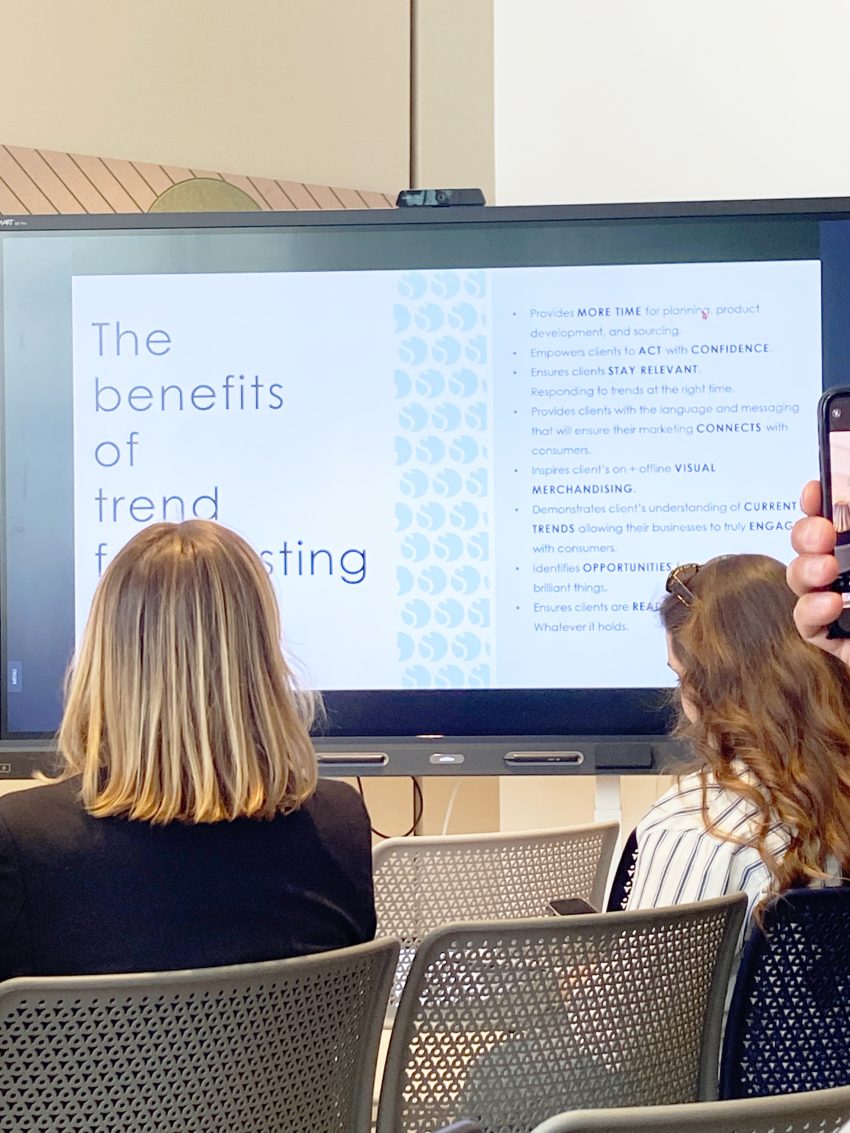
We attended Be Your Own Trend Forecaster, a dynamic seminar hosted by global trend experts Scarlet Opus at the KI Europe stand. The session offered a fascinating dive into the six-step methodology used to forecast macro trends across all aspects of life and how these influences ultimately impact design. These steps provide a new lens through which to view the world, revealing how global events shape future trends that, in turn, drive forward-thinking design. So, how to spot a trend? Below outlines what stages to follow and any key indicators that can help formulate a trend.
REVIEW
Start by reflecting on the social, cultural, political, and economic landscape. What’s shifting in the world?
ESTABLISH
Define your focus: which sectors, audiences, or lifestyles are most relevant to your business or design brief?
RESEARCH
Dive deep into emerging patterns, innovations, and movements across global markets and disciplines.
ANALYSE
Connect the dots. What signals keep appearing? What emotional needs or values are behind them?
EXPLORE
Imagine the future. Translate insights into visual concepts, materials, colours, and experiences.
IDENTIFY
Pinpoint the key trends that will resonate with consumers and shape future thinking.
To uncover impactful trends, the research must be broad and interdisciplinary, spanning a range of areas such as politics, medicine and fashion. The goal is to spot common themes and values that consistently emerge across these varied arenas, these are the signals that can help shape a future trend.
Key takeaway
With this in mind, by analysing and reviewing wider cultural and industry landscapes, we can begin to identify common threads that emerge across different sectors. These patterns and shared values are powerful tools to help fuel a more informed, future focused opinion and design approach.
As designers, staying curious and actively engaging with the world around us is essential. Inspiration can come from unexpected places social shifts, emerging technologies, art exhibitions, or even political change. By tuning in and asking questions, we position ourselves not just to follow trends, but to anticipate and shape them, so stay alert and stay curious!
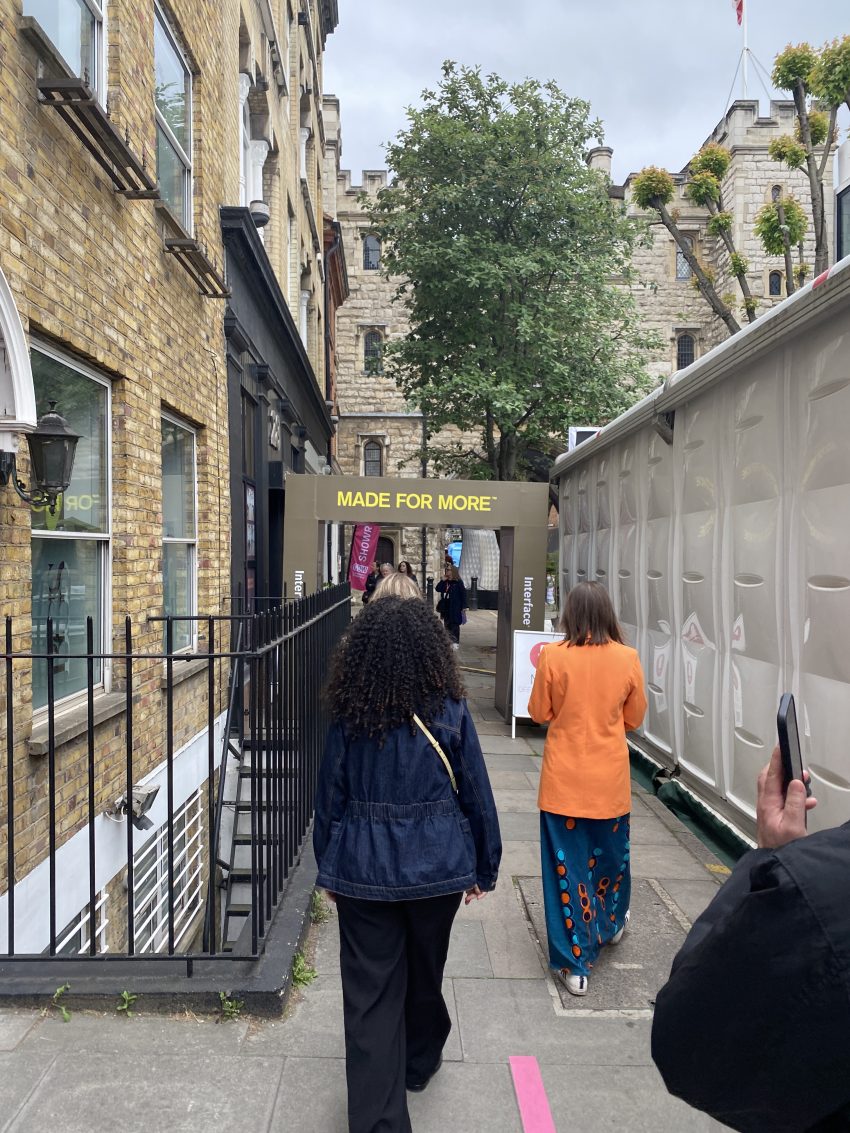
02 – Embedding Wellness into Homes, Hospitality, the Workplace and Beyond.
We also attended two insightful panel discussions hosted in the historic setting of the Charterhouse as part of Conversations at Clerkenwell. The first, titled “Embedding Wellness into Homes, Hospitality, the Workplace and Beyond,” featured a panel of three industry experts. With diverse backgrounds and disciplines, the speakers offered a broad and compelling perspective on how wellness can be thoughtfully integrated into design. Moving beyond surface-level additions to become a foundational element in creating healthier, more human-centred spaces.
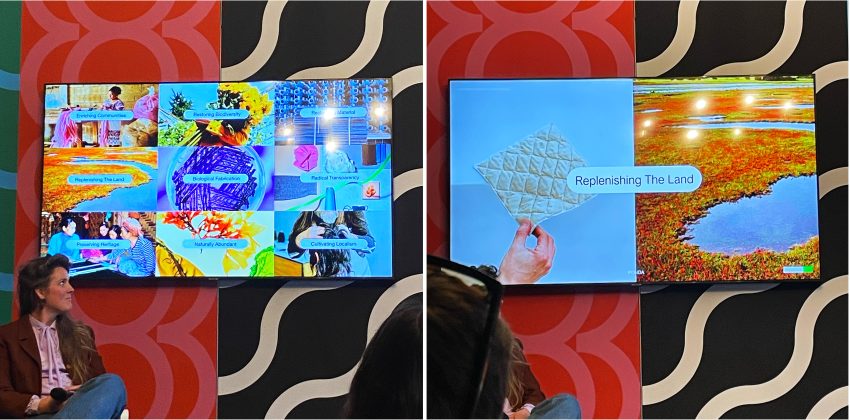
First on the panel was Robyn Landau, founder of Kinda Studios, whose approach to design is both measured and deeply rooted in science. She introduced the concept of neuroaesthetics an interdisciplinary model that bridges neuroscience with creative practices. This emerging field explores how design can influence the brain and body, offering a more evidence based framework for creating spaces that actively support mental and emotional well-being.
Next, we heard from Sunny Velikova, founder of NouraWell—a consultancy that partners with organisations to rethink and enrich their wellbeing strategies. Sunny spoke passionately about the tangible impact of a well-considered workplace environment. From improving morale and productivity to supporting overall wellbeing, she emphasised the importance of practical design elements such as air quality, acoustics, and lighting. Her insights grounded the conversation in everyday realities, reminding us that wellness in design isn’t just conceptual, it’s deeply physical and measurable.
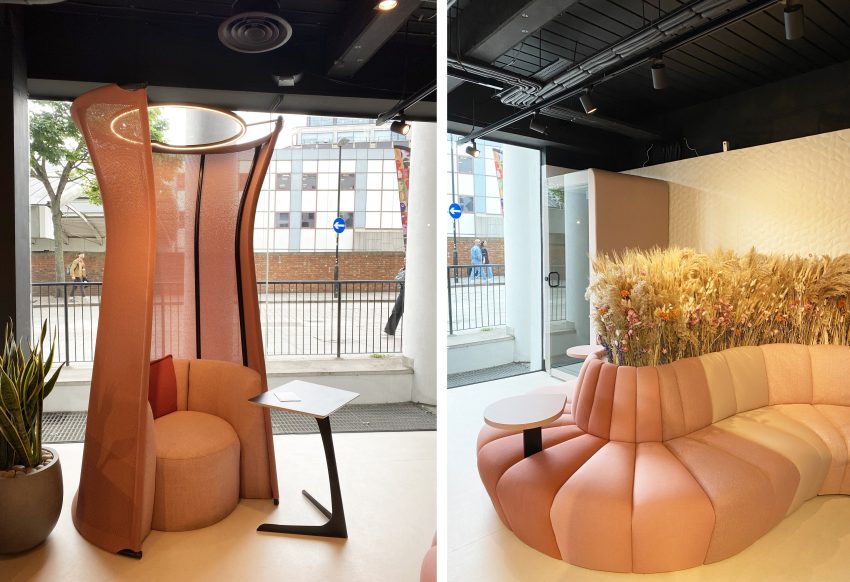
Lastly, the panel was rounded out by Simon Kincaid, Partner at Conran & Partners. With over 20 years of experience across the retail, residential, hospitality, and workplace sectors, Simon brought a wealth of practical insight to the discussion. His broad industry perspective helped tie together the various themes of the panel, offering an applied understanding of how wellness can be seamlessly embedded into design across different environments.
Key Takeaways
The panel highlighted that wellness in design goes far beyond aesthetics it requires a thoughtful, multidisciplinary approach that considers both the science and the sensory experience of a space. Integrating principles from neuroaesthetics, alongside practical factors like air quality, lighting, and acoustics, creates environments that genuinely support mental and physical well-being. So, as designers, wellness must be embedded from the very beginning of a project, not treated as an afterthought. We should aim to create environments that not only meet the practical needs of humans but also actively promote their overall wellbeing. We are currently integrating research from WELL training, LEED and BREEAM certifications to guide us in this approach to a holistic and considered design.
Now, onto some stand out installations
Feel the Pull – Pixel Artworks
Feel the Pull by Pixel Artworks, thoughtfully situated within the atmospheric Clerkenwell Detention House among the lighting suppliers. This immersive experience brilliantly combined sound and light that responded dynamically to magnetic forces within the space. While the installation’s captivating effect would have drawn visitors in anywhere, the unique backdrop of the Victorian vaults added an extra layer of intrigue and depth, enriching the sensory journey.
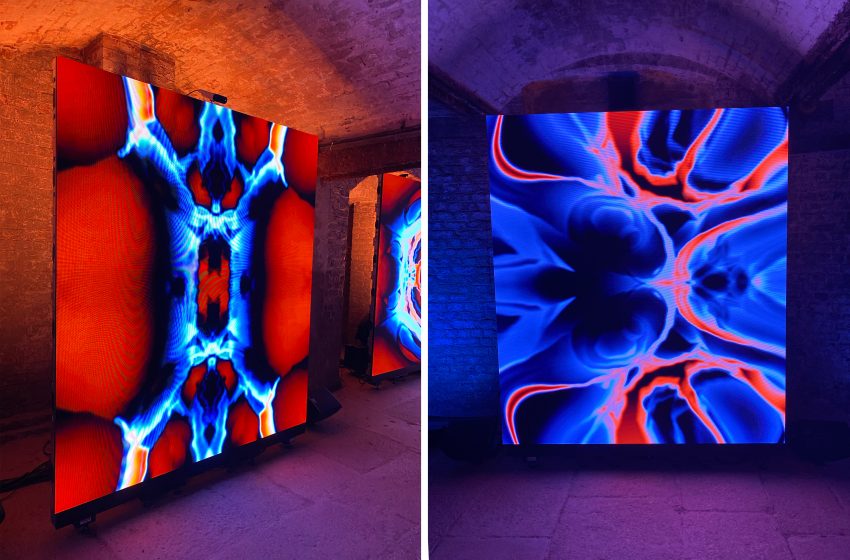
Shaping Water – Dezeen
What really stood out to us was how the installation combined advanced technology with care for the environment. Using a biodegradable material like PLA shows that high-tech design doesn’t have to harm the planet. It made us think differently about the materials we choose for 3D printing and other projects, proving that sustainability and creativity can go hand in hand. This piece inspired us to look for more eco-friendly ways to create, without losing any of the design’s impact or strength.
Following this, we visited Ideal Standard to learn more about the innovative 3D printing process and the sustainable PLA material used as the foundation of this remarkable piece.
Our Favourite from the day! – Exploring HairCycle: A Circular Future for Human Hair Waste
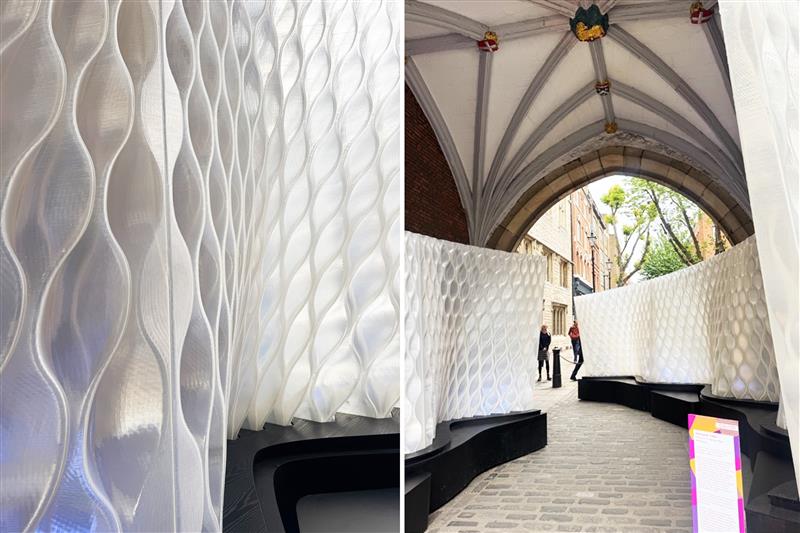
Studio Sanne Visser is a pioneering material design research studio focused on pushing the boundaries of material innovation and sustainability. Specializing in regenerative design, systems thinking, and circular solutions, the studio takes a unique approach by exploring human hair as a valuable resource. Through exhibitions, workshops, and collaborations with leading global institutions, Studio Sanne Visser is driving the future of circular design.
One of their exciting new projects, HairCycle, explores regenerative, local, bio-based, and circular models for managing human hair waste. In partnership with designers and researchers from the University of the Arts London and the London Borough of Newham, this initiative aims to transform how hair waste is collected, recycled, and reused in the community. Supported by the Design Museum’s Future Observatory programme and funded by the AHRC as part of UKRI, the one-year pilot study focuses on hair salons and barbershops in Newham.
Hair has incredible potential as a resource. Its unique properties make it suitable for use in textiles, fertilisers, and even building materials. By rethinking how this material is handled, HairCycle could help make local communities greener and more sustainable.
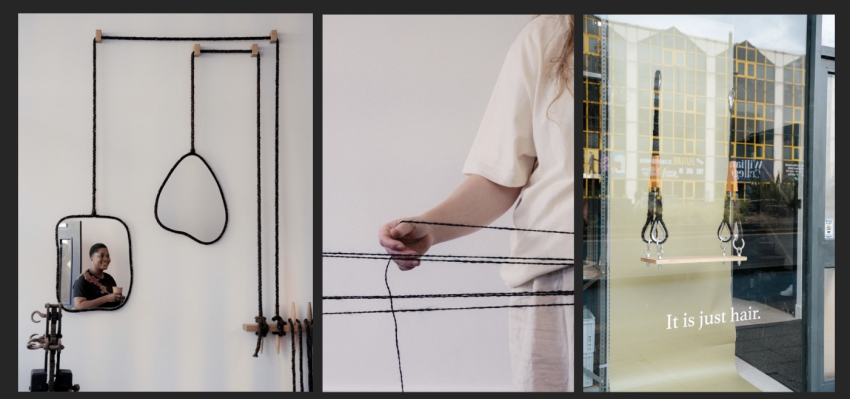
https://sannevisser.com/HairCycle-2024-present
Key Takeaways
HairCycle highlights the importance of reimagining waste as a resource. This project demonstrates how local, circular approaches to materials can lead to impactful environmental benefits. For designers and communities alike, it’s a powerful reminder that innovation often starts by looking closer to home and finding sustainable solutions in unexpected places. By embracing circular design principles and material research like this, we can reduce waste, lower environmental impact, and create a more sustainable future for all.
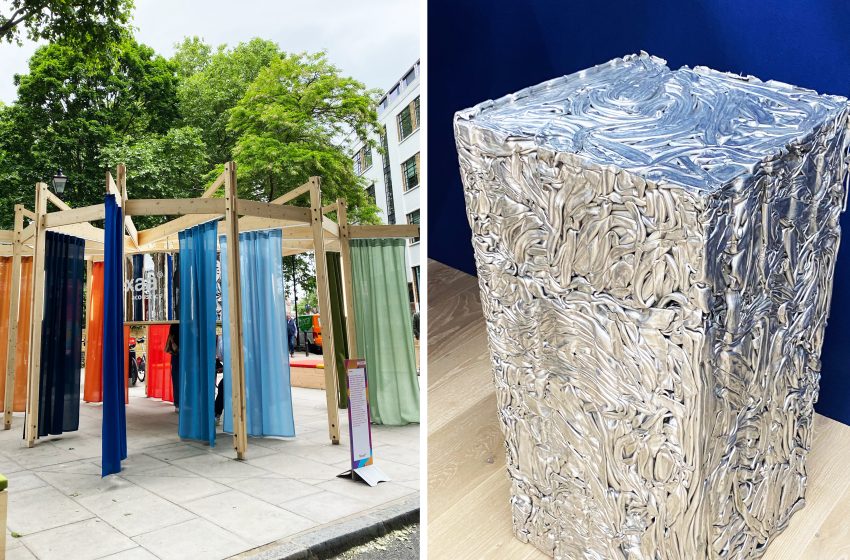
To learn more about designing with circularity in mind and making an educated material choice in your project, read our blog on ‘Sourcing Sustainably’.


